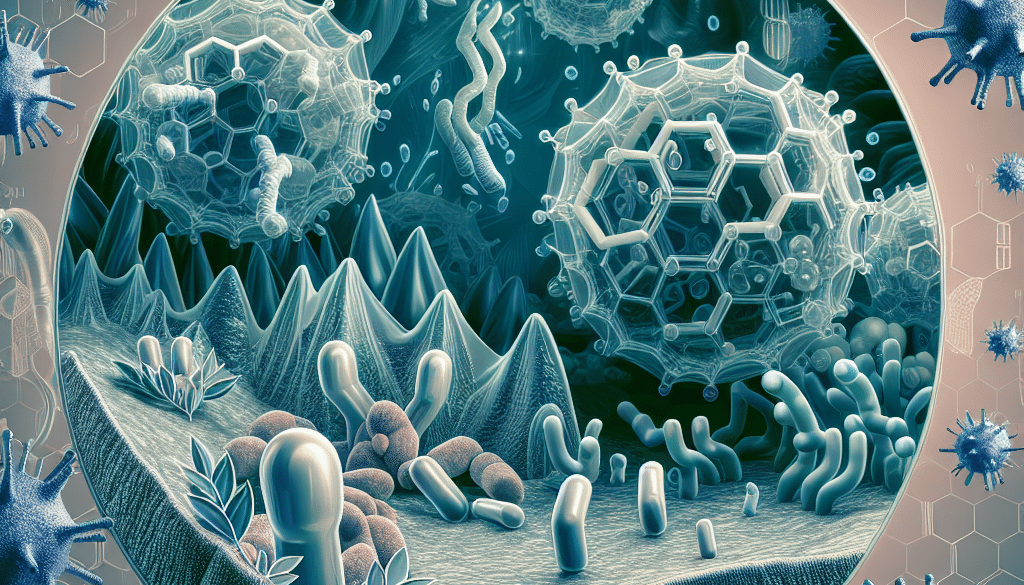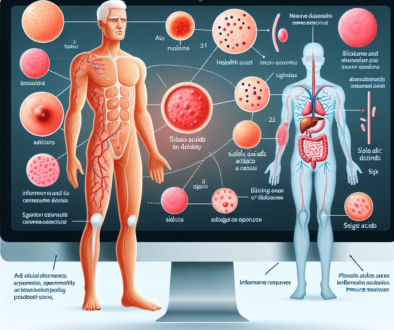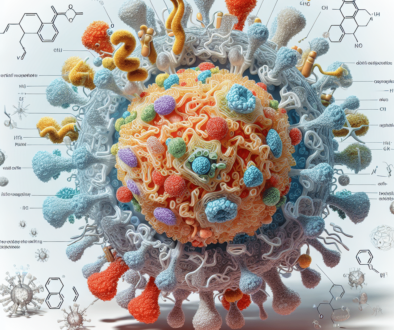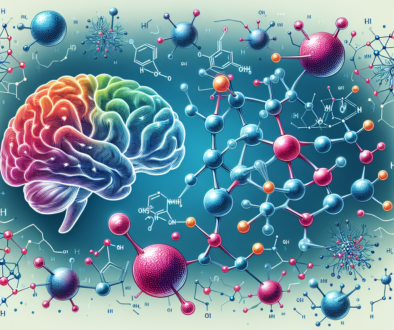Sialic Acid: Protecting Against Bacterial Infections
-
Table of Contents
- Sialic Acid: A Vital Ally in Combating Bacterial Infections
- Understanding Sialic Acid
- The Role of Sialic Acid in Immune Defense
- Examples of Sialic Acid in Action
- Research and Case Studies on Sialic Acid
- Statistics Highlighting the Importance of Sialic Acid
- Conclusion: The Protective Power of Sialic Acid
- ETprotein: Enhancing Health with High-Quality Protein Products
Sialic Acid: A Vital Ally in Combating Bacterial Infections

Bacterial infections pose a significant threat to human health, causing a range of diseases from mild skin infections to life-threatening conditions like pneumonia and meningitis. The battle against these microscopic invaders is ongoing, and understanding the role of sialic acid in protecting the body is a crucial part of this fight. This article delves into the science behind sialic acid, its function in the immune system, and how it helps shield us from bacterial infections.
Understanding Sialic Acid
Sialic acid is a term used to describe a family of more than 50 different derivatives of neuraminic acid. These sugars are found on the surface of cells, particularly in the membranes of mammalian cells, where they play a critical role in cellular functions, including cell-to-cell communication, and serve as receptors for certain pathogens.
The Role of Sialic Acid in Immune Defense
The human body has evolved complex mechanisms to protect itself from bacterial infections, and sialic acid is a key player in this defense system. Here’s how sialic acid contributes to our immune response:
- Masking Cell Surfaces: Sialic acid molecules on the cell surface can mask underlying sugar structures, preventing pathogens from recognizing and binding to the cells.
- Inhibiting Pathogen Adhesion: By occupying potential binding sites, sialic acid can inhibit the adhesion of bacteria to the cell surfaces, thwarting the initial step in many infections.
- Modulating Immune Responses: Sialic acids can modulate immune responses by interacting with sialic acid-binding immunoglobulin-type lectins (Siglecs), which are present on immune cells. This interaction can either activate or suppress immune responses, depending on the context.
Examples of Sialic Acid in Action
Several pathogens exploit sialic acid for their benefit, while others are deterred by it. Here are some examples:
- Influenza Viruses: Influenza viruses use sialic acid residues to gain entry into host cells. However, the body can also use sialic acid to its advantage by producing sialidase enzymes that remove sialic acid from the cell surface, thus preventing viral attachment.
- Group B Streptococcus: This bacterium can mimic host sialic acid structures to evade the immune system, a strategy known as molecular mimicry.
- Neisseria meningitidis: The bacterium responsible for meningitis has a capsule rich in sialic acid, which helps it avoid detection by the immune system.
Research and Case Studies on Sialic Acid
Scientific research has provided valuable insights into the role of sialic acid in preventing bacterial infections. For instance, studies have shown that certain bacteria can sialylate their surface structures to avoid immune detection. Other research has focused on developing drugs that can mimic sialic acid to prevent bacterial adhesion to human cells.
One notable case study involves the development of a sialic acid-analog called zanamivir, which is used to treat influenza. Zanamivir works by inhibiting the influenza virus’s ability to cleave sialic acid, thereby preventing the virus from spreading to other cells.
Statistics Highlighting the Importance of Sialic Acid
While it’s challenging to quantify the direct impact of sialic acid on bacterial infection rates, the prevalence of diseases where sialic acid plays a role underscores its importance. For example:
- According to the World Health Organization (WHO), influenza affects millions of people annually, leading to 290,000 to 650,000 respiratory deaths.
- Group B Streptococcus is estimated to cause about 18,000 invasive infections in newborns each year in the United States alone, according to the Centers for Disease Control and Prevention (CDC).
Conclusion: The Protective Power of Sialic Acid
In conclusion, sialic acid is a crucial component of the body’s defense against bacterial infections. Its ability to mask cell surfaces, inhibit pathogen adhesion, and modulate immune responses makes it an invaluable ally in the ongoing battle against infectious diseases. Ongoing research into the functions and applications of sialic acid continues to reveal new ways to harness its protective properties for better health outcomes.
ETprotein: Enhancing Health with High-Quality Protein Products
ETprotein is dedicated to supporting health and wellness through its high-quality protein products. Their offerings, including a variety of plant-based proteins and L-(+)-Ergothioneine, are designed to meet the diverse needs of the food, beverage, and supplement industries. By incorporating these proteins into your diet, you can support your body’s natural defenses, including the immune system’s ability to combat bacterial infections.
For those interested in enhancing their health and nutrition, ETprotein’s products are an excellent choice. Their commitment to non-GMO, allergen-free, and high-purity ingredients ensures that you are getting the best support for your well-being. To learn more about their products and how they can benefit your health, contact ETprotein today.
About ETprotein:
ETprotein, a reputable protein and L-(+)-Ergothioneine (EGT) Chinese factory manufacturer and supplier, is renowned for producing, stocking, exporting, and delivering the highest quality organic bulk vegan proteins and L-(+)-Ergothioneine. They include Organic rice protein, clear rice protein, pea protein, clear pea protein, watermelon seed protein, pumpkin seed protein, sunflower seed protein, mung bean protein, peanut protein, and L-(+)-Ergothioneine EGT Pharmaceutical grade, L-(+)-Ergothioneine EGT food grade, L-(+)-Ergothioneine EGT cosmetic grade, L-(+)-Ergothioneine EGT reference grade and L-(+)-Ergothioneine EGT standard. Their offerings, characterized by a neutral taste, non-GMO, allergen-free attributes, with L-(+)-Ergothioneine purity over 98%, 99%, cater to a diverse range of industries. They serve nutraceutical, pharmaceutical, cosmeceutical, veterinary, as well as food and beverage finished product distributors, traders, and manufacturers across Europe, USA, Canada, Australia, Thailand, Japan, Korea, Brazil, and Chile, among others.
ETprotein specialization includes exporting and delivering tailor-made protein powder and finished nutritional supplements. Their extensive product range covers sectors like Food and Beverage, Sports Nutrition, Weight Management, Dietary Supplements, Health and Wellness Products, and Infant Formula, ensuring comprehensive solutions to meet all your protein needs.
As a trusted company by leading global food and beverage brands and Fortune 500 companies, ETprotein reinforces China’s reputation in the global arena. For more information or to sample their products, please contact them and email sales(at)ETprotein.com today.














